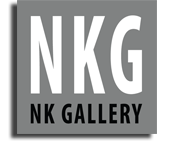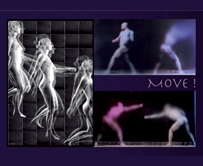Jeffrey P. Heyne: MOVE!
J E F F R E Y P. H E Y N E
Statement
My current series of works are reinterpretations of Eadweard Muybridge’s stop-motion photos from the 1880’s. It is from toy flip-books of the photos comprising his seminal publication, Animal Locomotion, which my work borrows from.
I am interested in the idea of playing with his iconic images-- to make his frozen photos “move” again. Muybridge’s high shutter speeds broke down movement into distinct visual images, separated by equal intervals of time that could be analyzed frame by frame, and to observe a cause and effect sequence for scientific study. From a physical point of view, each of the still images is actually a record of a period of time of about 1/2000 of a second, a short time but still a duration of time. From a phenomenological point of view though, can this freeze-frame image, in a sense, be re-activated to release the latent motion it originally recorded?
With Photoshop, I alter Muybridge’s image by distorting, blurring, warping, stretching, or twisting to imply a sense of motion. I would like to elicit a metaphorical sense of allowing time to re-flow. Like pressing
<PLAY> after the <PAUSE> button has been on for the past 125 years.
But how is this new motion read in today’s time? What visual consequences present themselves by re-animating the flow of time? I feel a new narrative is posed by the isolation of a single Muybridge image from the context of its original sequence. My selection of alternate colors further jars the meaning. Effects of blurring and distortion torque the space. Multiple and mirror images lend tension or evoke other pattern-based associations.
With the application of a thick top coat of glossy resin, the picture plane of the photo image is visually slippery, and appears to float somewhere within the thickness. I think of my Muybridge images as cast in another type of frozen state, much like an ancient biological specimen locked away within a piece of crystalline amber.
September 2010









